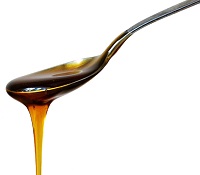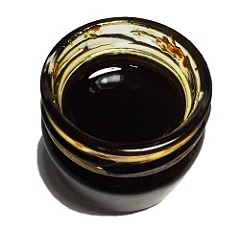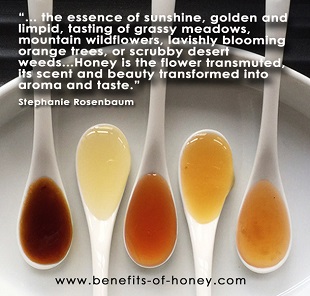taste of honey
Appreciate the Taste of Honey Like a Pro with 8 Easy Steps

There exist several hundreds of unique honey types and different taste of honey varieties from all over the world. Almost every country produces honey, each country has its main and special floral honey varieties and quality standards, but the leading honey-producing countries are the USA, Canada, Australia, Argentina, Mexico and China.
Some people judge honey quality by their floral origin, but each floral variety has its own distinct and original taste, texture, and color. Flavors vary from very mild and blend to strong and pungent and colors range from dark brown to colorless. As a general rule of thumb, light-colored honey is milder in taste and dark-colored honey, stronger.
While table sugar has a sweet taste, honey has a flavor. Hold your nose when you’re eating and you’ll quickly draw a distinction between taste and flavor. The unique aroma, flavor and colour of each of the honey varieties are determined by the floral source, such as clover, basswood, orange blossom or buckwheat, from which the bee collects the nectar.

Aristotle the Greek philosopher reported in the 3rd century B.C that honey bees which have gathered from a certain flower choose to return to another flower of the same sort and they communicate to other foreigners in the hive by means of scent and physical movement, the location of the specific nectar source.
He observed that on each expedition the bee does not fly from a flower of one kind to a flower of another kind until it has got back to the hive. On reaching the hive, the bees throw off their load and each bee on her return is followed by three or four companions. Bees can select the best yielding nectar source available at a given time, which leads them to concentrate on a single source. Hives that have been moved into blooming fields for purposes of pollination offer bees a great single source to collect from. In order to be labeled as a certain variety, a honey must be 80% from the named source.
Honeys vary not only in color and flavor, but also in their medicinal properties, with some varieties such as the Manuka honey being more potent than others. After trying out so many different brands of honey, I find that the same floral variety of honey of different brands may not taste exactly the same. Climatic conditions of the area can influence the color, quality, and thus flavor and taste of honey varieties.
Figure The Taste of Honey Like a Pro

I learned from a honey recipe book some interesting steps and tips on how one can explore and appreciate the taste of honey varieties and would like to share with you.
1) Before tasting, take a sniff of the honey aroma in the jar.
2) Spoon out a dollop of honey, less than an eight of a teaspoon. Put it in your mouth.
3) Allow it to dissolve on the front of your tongue.
4) As the taste buds respond to the dissolving honey, you may smack your lips to sort out the full range of flavors.
5) The flavors are enhanced when the honey flows to the back and sides of your mouth.
6) Take time to observe the lingering aftertaste.
7) When you taste several honeys in a row, drink hot black tea in between to keep the palate clear. Unsalted crackers can also help restore your tasting apparatus.
8) Give your taste senses time to figure the complexities in the honey before moving on to another sample.
Pages on Related Topic on The Taste of Honey
1. If you have never liked honey or believed that it tastes good, this page may just change your mind: Taste Honey? No Way!
2. This honey has been described as one that you would either swear by it or swear about it: An Irreplaceable Tasmanian Honey
3. “Honey is sweet” isn’t good enough, here are: 100 Interesting Ways to Describe the Taste of Honey
4. The endless floral varietals of honey: Exploring 36 Honey Floral Varieties (#21 is Highly Sought-After)
End of “Appreciate the Taste of Honey Like a Pro with 8 Easy Steps”. Back to “Exploring Honey Varieties!”